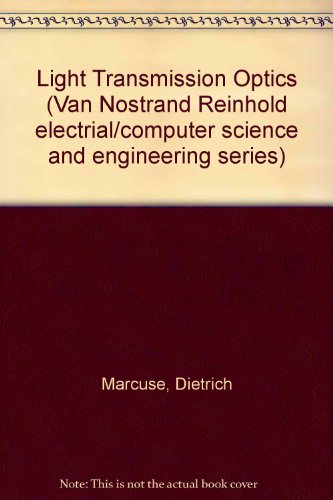Light transmission optics pdf download
Par sigler beatrice le mercredi, mai 24 2017, 21:04 - Lien permanent
Light transmission optics by Dietrich Marcuse


Light transmission optics Dietrich Marcuse ebook
Format: djvu
Page: 544
ISBN: 0442263090, 9780442263096
Publisher: Van Nostrand Reinhold
Light Transmission - All optical glass both absorbs and reflects light, both of which result in light loss. Laser control of polariton current offers a new range of devices for all-optical logic circuits. They are also used in medical imaging and mechanical engineering inspection. The extent of Relative Brightness - The usefulness of an optical instrument lies in its ability to both gather and transmit light. First, start by realizing that when companies like Verizon say their fiber optic cables transmit data “at the speed of light,” they are essentially lying. I don't really understand the math, but Leupold says that most optimized optics transmit as much light as possible in the green wavelength. More precisely, the 2009 Nobel Prize in Physics, which has been awarded to Charles K. The finding was For more information about the investigation of Photuris firefly, you can read the paper published in the OSA open-access journal Optics Express: “Improved light extraction in the bioluminescent lantern of a Photuris firefly (Lampyridae)” [4.22MB PDF]. In this article, we will show you how these tiny strands of glass transmit light and the fascinating way that these strands are made. In the 1950s, Esaki [1] proved that electrons can Nguyen et al. The difference between a fiber optics system and a copper wire system is that fiber optics use light pulses to transmit information down fiber lines instead of using electronic pulses to transmit information down copper lines. Special high light transmission optics Long eye relief Precision MIL-DOT reticle with adjustable brightness Built in powerful hazard-free adjustable IR illuminator(75 mW) Wide range of mounts Water resistance Light weight Competitive price. (c) When P gate slightly exceeds P res , vanishing transmitted signal is observed. When the researchers used computer simulations to model how the structures affected light transmission they found that the sharp edges of the jagged, misfit scales let out the most light. Fiber optic cables are usually made of glass or plastic but those materials actually slow down the transmission of light ever so slightly. Studied cavity polaritons [7], which are light-matter quasiparticles responsible for the coupling between electron-hole pairs (excitons) and photons trapped in a semiconductor cavity on a micrometer scale.